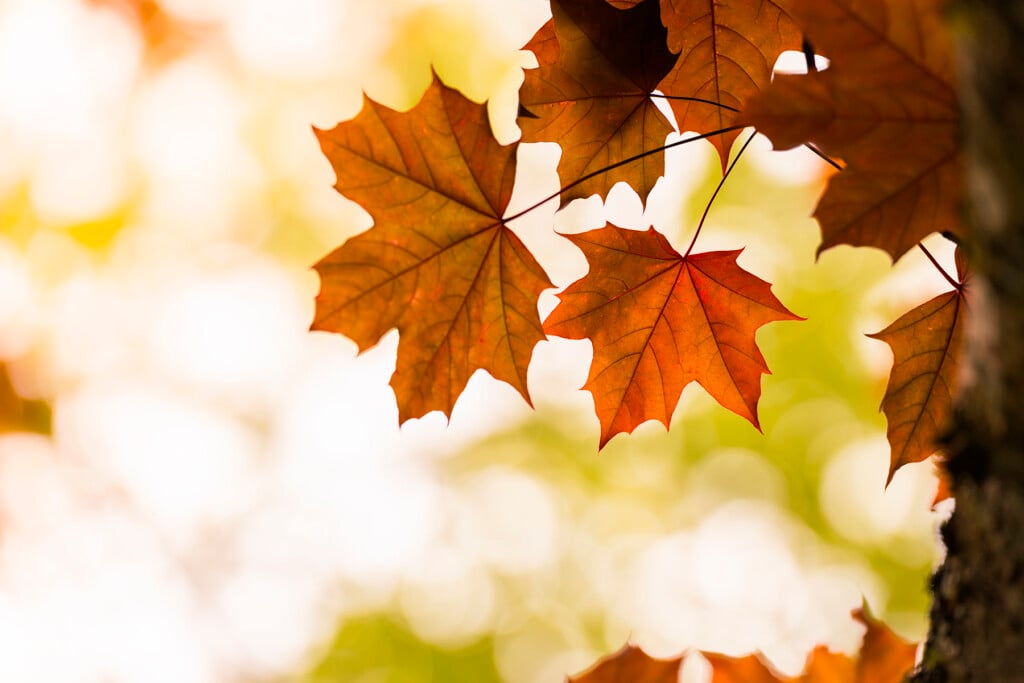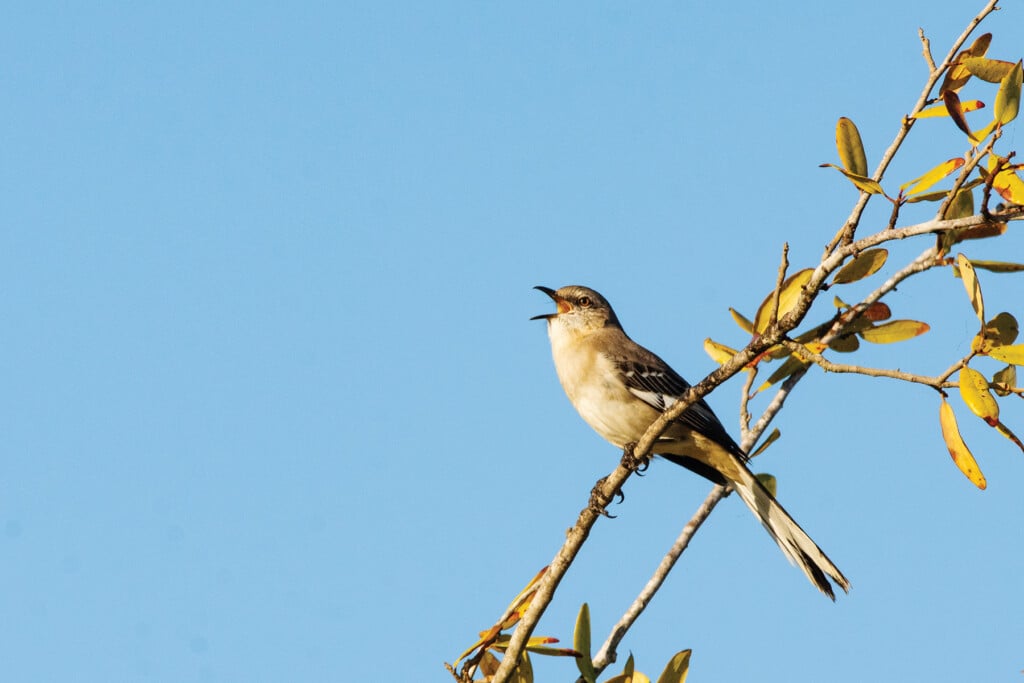Blooms and Berries
Native shrubs sparkle and shine with attractive spring flowers and edible fruit

Vaccinium is a low-maintenance native plant genus with dependable spring blooms. The plant also produces edible berries that are a favorite of birds.
Sparkleberry (Vaccinium arboretum) is the only North American member of the Vaccinium genus capable of reaching the size comparable to a small tree. Mature specimens can reach up to 30 feet in height and will take full sun or partial shade.
Their blooms emerge in clusters measuring
2 to 3 inches long. The fragrant white flowers are bell-shaped in appearance, as are most blooms in this genus.
This species flourishes in Northwest Florida’s quick draining acidic soils and produces a bountiful crop of berries that turn blue-black at maturity. The common name, sparkleberry, comes from the glossy appearance and texture of its fruit.
The shiny, black ¼-inch berries contain eight to 10 seeds. Berries ripen in the fall and remain attached to the plant throughout the winter, serving as a consistent food source for birds and mammals.
Their bark is thin, flaky, and brownish red, and commonly has lichen growing on the surfaces that shed as it grows. The trunk can be a single or multi-stemmed tree with branches creating wildly twisting shapes that offer a distinct contrast to straight trunked trees in a landscape.
Other Northwest Florida native Vaccinium species include the scrub blueberry (Vaccinium darowii), which is known for its heat tolerance and low requirement for chill hours, or times when winter temperatures fall below 45 degrees.
The shiny blueberry (Vaccinium myrsinites) is found in Northwest Florida, too. It will form thickets by utilizing subterranean runners in addition to producing berries almost a ½-inch in diameter and containing several seeds.
Some Bugs Cause a Stink
Finding gold nuggets in the home landscape, even small ones, is usually good. However, if the nuggets are stink bug eggs, immediate action is required to minimize the potential for horticultural damage.
Stink bugs, which are members of the Pentatomidae family of insects, have a well-deserved reputation for bad behavior and an offensive odor. This bug’s common name comes from an internal chemical protection system used to deliver a foul-smelling substance when it is threatened. This anti-predator mechanism is located in the stink bug’s thorax pores and is hard to overlook when it is used.
These insects use their rigid proboscis or straw-like beak to suck out the juices from the stems, buds, and fruit. Tender vegetation and immature vegetables are particularly attractive.
The wound opening in a plant’s surface also exposes it to a variety of fungal diseases.
As spring warms to summer, an abundant quantity of this family’s malodorous members will be feeding on ornamental plants and vegetables. They will also leave tiny, metallic-appearing eggs on leaf tops.
Gardeners can collect any eggs found and destroy them. Once hatched, juvenile and mature stinkbugs are usually controlled with insecticides. Capturing stinkbugs is difficult. They are good flyers and are agile and alert.
Slug Season in Full Swing
Slugs, terrestrial snails without shells, are currently in search of meals and mates. Only a few months old, they deposit hundreds of eggs in moist spots away from direct sunlight. Sometimes the deposits are left slightly below the soil’s surface. The eggs incubate for three weeks, with juveniles emerging ready to roam and eat. Initially less than ¼-inch and earth toned, the nascent creatures can quickly grow to several inches in length. Snails and slugs both propel themselves on a muscular foot, which extends the length of its body. Its eyes are simple and located at the end of tentacles, which constantly move. Unable to recognize shapes, it searches for the lowest light, usually signaling a hospitable environment. Dining preferences are tender vegetation and decaying organic matter. A voracious consumer, its mouth has a conveyer belt-like structure covered with tiny teeth for shredding and digesting its meals. Mealtime for slugs depends on where the sustenance is located and its exposure to sunlight. Nights are a time of high activity for slugs. The cooler temperatures and higher moisture of Northwest Florida’s spring evenings combine with emerging foliage to form an ideal dining experience.Slugs are easy to catch, but heavy infestations may require a commercial treatment to achieve control.


